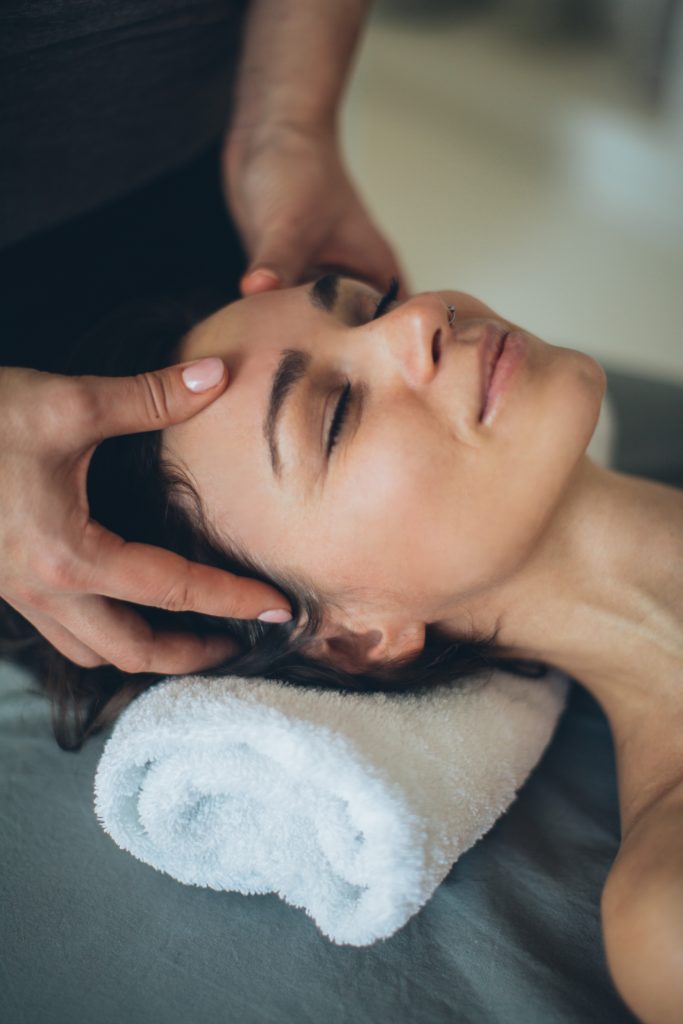
Shiatsu massage is a form of bodywork that originated in Japan. It is a therapeutic approach that uses finger pressure and stretching techniques to stimulate the body’s natural healing processes. Shiatsu massage is a type of holistic therapy that seeks to treat the whole person, rather than just the physical symptoms of a particular ailment.
In this article, we will explore the history, benefits, techniques, and applications of shiatsu massage.
The History of Shiatsu Massage
Shiatsu massage has its roots in traditional Chinese medicine, which dates back more than 5,000 years. In Chinese medicine, the body is seen as a network of energy channels or meridians, which carry vital energy, or Qi, throughout the body. Blockages or imbalances in these meridians are believed to cause illness and disease.
In the 6th century, Japanese monks traveled to China to study Buddhism and Chinese medicine. They brought back with them the principles of Chinese medicine, including the meridian system. Over time, the Japanese developed their own unique approach to bodywork, which they called shiatsu.
The word shiatsu literally means “finger pressure” in Japanese. Shiatsu massage is a form of acupressure, which uses finger pressure to stimulate the body’s energy channels and promote healing. Shiatsu massage was officially recognized as a therapeutic technique in Japan in 1964.
The Benefits of Shiatsu Massage
Shiatsu massage is a holistic therapy that can help to promote physical, emotional, and spiritual well-being. Some of the benefits of shiatsu massage include:
- Relaxation: Shiatsu massage can help to reduce stress and promote relaxation. The gentle pressure and stretching techniques used in shiatsu massage can help to calm the nervous system and reduce tension in the muscles.
- Pain relief: Shiatsu massage can help to relieve pain and stiffness in the body. The finger pressure used in shiatsu massage can help to stimulate the body’s natural pain-relieving mechanisms and promote the release of endorphins.
- Improved circulation: Shiatsu massage can help to improve circulation and promote the flow of blood and lymph throughout the body. This can help to nourish the tissues and promote the elimination of toxins.
- Improved digestion: Shiatsu massage can help to stimulate the digestive system and promote healthy digestion. The pressure applied to the abdomen can help to promote peristalsis and relieve constipation.
- Increased flexibility: Shiatsu massage can help to increase flexibility and range of motion in the joints. The stretching techniques used in shiatsu massage can help to improve mobility and reduce stiffness.
- Emotional well-being: Shiatsu massage can help to promote emotional well-being and reduce anxiety and depression. The deep relaxation and sense of well-being that shiatsu massage can provide can help to reduce feelings of stress and promote a sense of calm.
The Techniques of Shiatsu Massage
Shiatsu massage uses finger pressure and stretching techniques to stimulate the body’s energy channels and promote healing. The practitioner uses their fingers, thumbs, palms, and elbows to apply pressure to specific points on the body, known as acupressure points.
The pressure applied in shiatsu massage is generally gentle and firm, but not painful. The practitioner uses their body weight to apply pressure, rather than relying on their muscles. This allows the practitioner to apply pressure for longer periods of time without becoming fatigued.
The stretching techniques used in shiatsu massage are designed to help improve flexibility and mobility in the joints. The practitioner may use stretching techniques that involve gently pulling and rotating the limbs and joints, as well as passive stretching techniques that involve holding a stretch for a period of time.
The practitioner may also use other techniques, such as kneading, tapping, and shaking, to
stimulate the body and promote relaxation.
Shiatsu massage is typically performed on a mat on the floor, with the recipient fully clothed. The practitioner may use bolsters, pillows, or blankets to help support the body in comfortable positions.
Applications of Shiatsu Massage
Shiatsu massage can be used to treat a wide range of physical and emotional conditions. Some of the common conditions that can be treated with shiatsu massage include:
- Back pain: Shiatsu massage can help to relieve tension and pain in the muscles of the back, neck, and shoulders.
- Headaches: Shiatsu massage can help to relieve tension headaches and migraines by promoting relaxation and improving circulation.
- Digestive problems: Shiatsu massage can help to promote healthy digestion and relieve constipation, bloating, and other digestive issues.
- Stress and anxiety: Shiatsu massage can help to reduce feelings of stress and anxiety by promoting relaxation and a sense of well-being.
- Insomnia: Shiatsu massage can help to promote relaxation and reduce tension, which can help to improve sleep quality and reduce insomnia.
- Joint pain and stiffness: Shiatsu massage can help to improve flexibility and mobility in the joints, which can help to reduce pain and stiffness.
Conclusion
Shiatsu massage is a powerful therapeutic approach that can help to promote physical, emotional, and spiritual well-being. It is a form of holistic therapy that seeks to treat the whole person, rather than just the physical symptoms of a particular ailment.
Shiatsu massage has its roots in traditional Chinese medicine and has been developed over time by the Japanese. It uses finger pressure and stretching techniques to stimulate the body’s energy channels and promote healing.
Shiatsu massage can be used to treat a wide range of physical and emotional conditions, including back pain, headaches, digestive problems, stress and anxiety, insomnia, and joint pain and stiffness.
If you are interested in trying shiatsu massage, it is important to seek out a qualified practitioner who is trained in this technique. With regular shiatsu massage sessions, you can experience the many benefits of this powerful therapeutic approach and improve your overall health and well-being.
